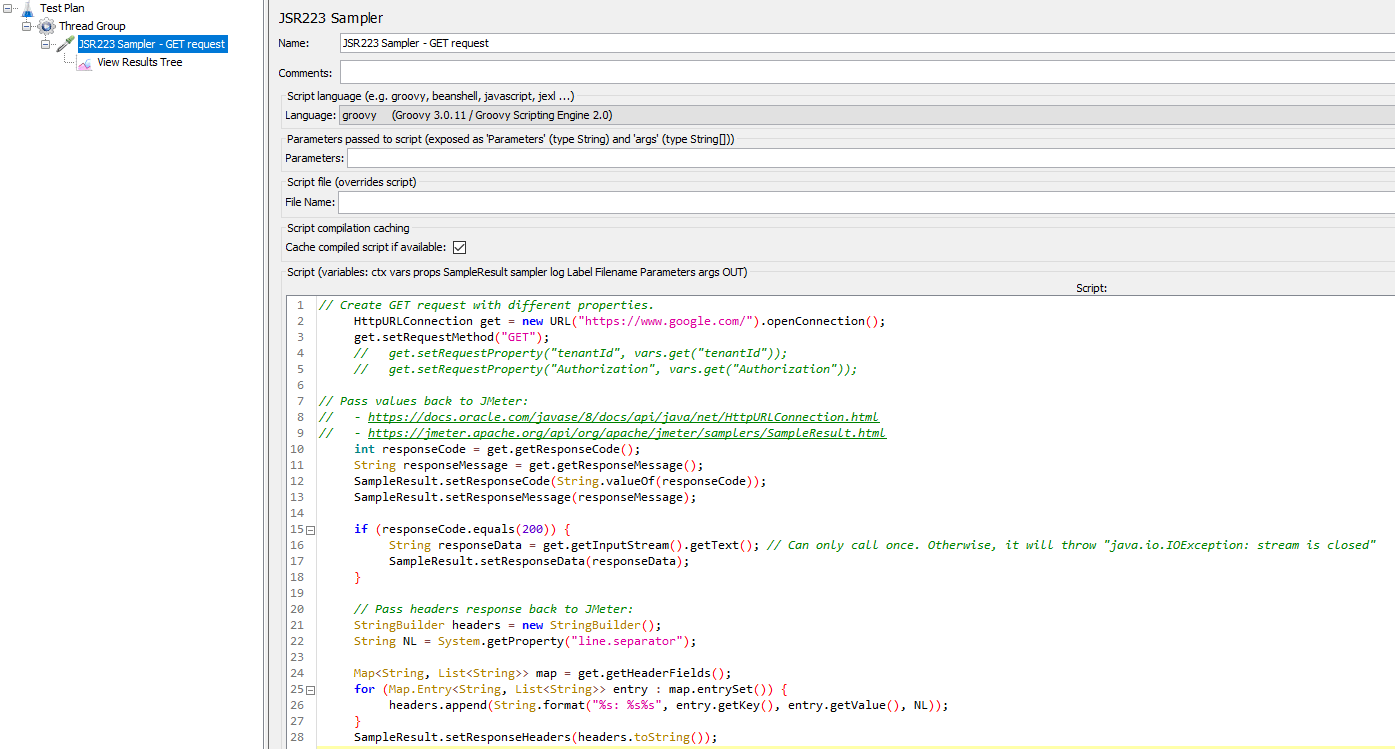Here is how to create a GET request using Groovy. The main idea is to create the request using HttpURLConnection class and then pass the results back to JMeter through SampleResult variable.
// Create GET request with different properties. HttpURLConnection get = new URL("https://www.google.com/").openConnection(); get.setRequestMethod("GET"); // get.setRequestProperty("tenantId", vars.get("tenantId")); // get.setRequestProperty("Authorization", props.get("Authorization")); // Pass values back to JMeter: // - https://docs.oracle.com/javase/8/docs/api/java/net/HttpURLConnection.html // - https://jmeter.apache.org/api/org/apache/jmeter/samplers/SampleResult.html int responseCode = get.getResponseCode(); String responseMessage = get.getResponseMessage(); SampleResult.setResponseCode(String.valueOf(responseCode)); SampleResult.setResponseMessage(responseMessage); if (responseCode.equals(200)) { String responseData = get.getInputStream().getText(); // Can only call once. Otherwise, it will throw "java.io.IOException: stream is closed" SampleResult.setResponseData(responseData); } // Pass headers response back to JMeter: StringBuilder headers = new StringBuilder(); String NL = System.getProperty("line.separator"); Map<String, List<String>> map = get.getHeaderFields(); for (Map.Entry<String, List<String>> entry : map.entrySet()) { headers.append(String.format("%s: %s%s", entry.getKey(), entry.getValue(), NL)); } SampleResult.setResponseHeaders(headers.toString());


